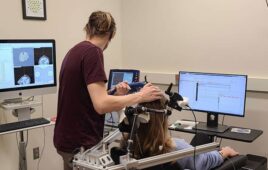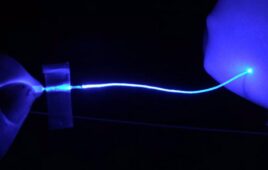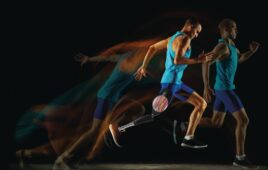Co-founder and CEO Jacob Robinson explains how Motif designed the neurostimulation system to treat depression like a pacemaker for the brain.
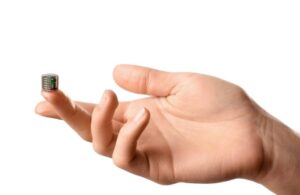
This rendering depicts the Motif DOT microstimulator prototype used in first-in-human and large animal studies. [Image courtesy of Motif Neurotech]
The milestone came more than a decade after Motif co-founder and CEO Jacob Robinson took a faculty position in the electrical engineering department at Rice University in 2012. There, the goal was to create neurotechnologies that were smaller, less invasive and more capable.
Since then, he’s worked to figure out new platforms and new architectures for therapeutic neurotechnologies.
In 2022, he launched Motif Neurotech with neurosurgeon and Chief Medical Officer Dr. Sameer Sheth, minimally invasive interventional neurologist Dr. Sunil Sheth and miniaturization expert Kaiyuan Yang, who leads Rice University’s Secure and Intelligent Micro-Systems Lab. This year, Motif hired Medtronic Neuromodulation veteran Steven Goetz as chief technology officer.
The Houston-based medtech startup has developed a miniature device to precisely stimulate the brain, saying it restores healthy circuit activity to treat mental health disorders at home following a 20-minute outpatient procedure for implantation. The company designed its Digitally programmable Over-brain Therapeutic (DOT) implant to treat treatment-resistant depression (TRD, a form of major depressive disorder) with minimal side effects compared to drugs.
Robinson sees a path to make neuromodulation therapy for mental health as common as pacemakers in cardiology, he said in an interview with Medical Design & Outsourcing
“I think there’s a future in which the electronic therapies that you provide adapt to your own needs and get better over time,” Robinson said. “They get better as they learn the pattern of stimulation that works best for you. They get better as we get more data across more individuals and develop better ways to classify brain activity as signals that help us improve the therapy.
“The vision for the world that I like to imagine is where implants that you get for mental health get better over time and better as more people begin to use those devices,” he continued. “I think that part is really exciting.”
The challenge of creating the device
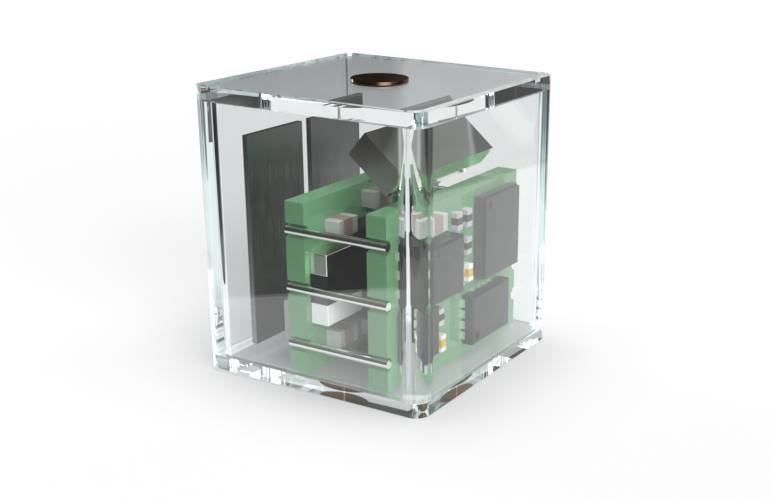
The assembled Motif DOT microstimulator device measures 9 mm wide. [Image courtesy of Motif Neurotech]
This method of stimulation — transcranial magnetic stimulation (TMS) — uses a large machine to create a giant magnetic field. Brainsway, Neuronetics and other device developers have made inroads in this space.
To verify that noninvasive stimulation actually stimulates the brain, practitioners first stimulate the motor cortex until the patient begins to move their finger. By proving stimulation of the motor threshold, they can then move to the prefrontal cortex and treat psychiatric conditions.
“The question we asked is, how are we building this tiny implant — about the size of a pea — and it’s supposed to replace this room-sized magnet?” Robinson said. “How do I know that it’s actually stimulating the brain in the same way?”
Motif recognized that it could go to the motor cortex, like TMS. Working with neurosurgeons at Baylor College of Medicine, the team was able to test the device’s stimulation capabilities on a patient having a tumor resected. They placed the device on the motor cortex above the dura, so that it would not be in direct contact with the brain.
Robinson said surgeons used a wand to communicate with the implant, delivering energy and enabling wireless control of the tiny device.
“They pushed go and applied stimulation and that’s when we began to see finger movements,” Robinson said. “That was our ‘aha’ moment.”
Developing the miniature Motif DOT implant

This illustration shows the Motif DOT microstimulator device’s miniaturized components. [Image courtesy of Motif Neurotech]
“What that did was that really unlocked the ability to make miniature devices and have a new way of delivering energy that will allow us to make devices smaller than anybody else can make, but still have enough power to create therapeutic neuromodulation,” Robinson said.
When Robinson began work on this technology, he and his team looked at solving the challenge of wireless power transfer. To make the device as small as possible, they aimed to find a way to energize implants without batteries.
“The challenge is that, as you make content that is really small, the efficiencies also tend to get really small,” Robinson explained. “The amount of power that it can deliver gets really small. So we took a different approach. Rather than using an antenna like a magnetic coil for magnetic induction or an antenna that you would use to capture energy from electromagnetic waves, we created a material.”
That material, he said, vibrates in the presence of a magnetic field, with the vibrational energy converting into electrical energy.
After breaking through on the wireless power transfer, the team had to find a way to get its miniaturized device close to the brain tissue. Placing the small device within a burr hole in the skull without touching the brain makes it a safer, faster and easier procedure than open-brain surgery. And it gets the Motif implant close enough to the target tissue that it eliminates the need for a lot of energy, Robinson said.
“We combined those two things to make tiny electronics, tiny energy sources and the whole thing can be really small,” Robinson said. “That allows us to get close to the brain and deliver the energy that’s required to stimulate brain activity in a way that requires a lot of energy if you’re really far away.”
The Motif Neurotech DOT as a “brain pacemaker”
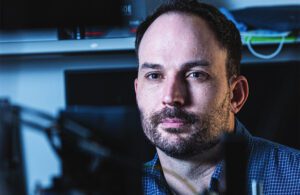
Motif Neurotech co-founder and CEO Jacob Robinson [Photo courtesy of Motif Neurotech]
Robinson said these closed-loop, patient-specific features break up the traditional medical device architecture of having an implant — and only an implant — for an extended period of time. The system can also potentially expand to other sites for stimulation and recording. Robinson said research shows potentially better outcomes with stimulation on both sides of the brain (bilaterally). Over time, he could see adding a second, third or fourth device.
He compared the technology to cardiac pacemakers, where “people have three leads put in, but they have to route those wires all over the place.”
“We can add additional leads” with Motif’s technology, he said. “We don’t have to connect wires between them.”
The similarities to a pacemaker go beyond the leads — so far, in fact, that Robinson considers Motif’s implant a “brain pacemaker.” The technology engages a network in the brain to help people overcome the “oppressive barrier” preventing them from performing tasks like getting out of bed, taking a shower or brushing one’s teeth.
Like a pacemaker in a patient’s heart, the Motif implant delivers electrical stimulation and restores natural rhythms in the brain to help people with depression motivate themselves to perform the necessary tasks to get well, he said.
“I like the idea of being able to treat psychiatric conditions with a brain pacemaker,” Robinson said. “It’s now accepted that if you suffer from a cardiac condition and your drugs aren’t working for you, you can get an implant and it will likely save your life. The same analogy holds for mental health.”


